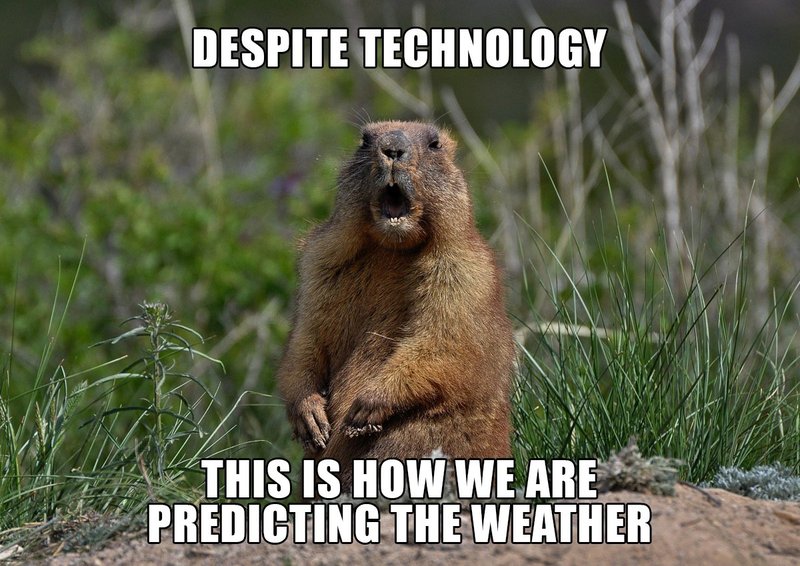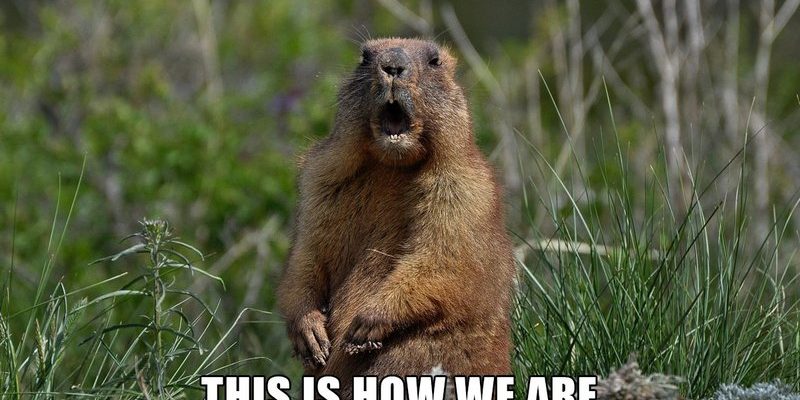
Let’s dive into the world of these charming critters, bust a few myths, and get the real scoop on what makes them tick. Honestly, understanding groundhogs is kind of like peeling an onion; there are many layers to uncover. You might be surprised by what you learn, just like you might be surprised when you find out how much wood a woodchuck would chuck if a woodchuck could chuck wood. Spoiler alert: it’s not as much as you think!
Myth 1: Groundhogs Are Just Weather Predictors
You might be surprised to learn that while groundhogs are associated with weather predictions, they are so much more than just a harbinger of spring. The idea that a groundhog can predict the weather originates from an old tradition. But honestly, relying on a furry animal for a scientific forecast doesn’t hold up in reality.
Groundhogs are members of the squirrel family and possess incredible survival skills. They dig intricate burrows, which are perfect homes to keep them safe from predators. Their burrowing habits play a crucial role in aerating the soil and boosting plant growth in their habitats. So, while Groundhog Day puts them in the spotlight, their role in the ecosystem is far more significant than merely predicting weather patterns.
Myth 2: Groundhogs Are Only Found in the Woods
You might picture a groundhog as a creature of vast, open woodlands, but the truth is they can thrive in various environments. While they do enjoy forested areas, you can also find them in fields, gardens, and even suburban neighborhoods.
Groundhogs are surprisingly adaptable. They often make their homes near human habitats because of the abundance of food. Think about it: a garden full of vegetables is a groundhog’s buffet. So, if you spot one in your backyard munching on your greens, just know that it’s simply taking advantage of its surroundings.
Myth 3: Groundhogs Are Aggressive Creatures
Another common misconception is that groundhogs are aggressive. It’s easy to assume that a creature with sharp teeth and claws must be fierce, but that’s not the case. Groundhogs are primarily herbivores, feasting on grass, clover, and various plants. They’re more interested in eating than in causing a ruckus.
When threatened, a groundhog may hiss or grunt to warn you to keep your distance. They’re generally pretty shy and would much rather retreat to their burrow than engage in a confrontation. So, if you come across a groundhog, give it space, and let it do its thing. They’re not looking for a fight!
Myth 4: Groundhogs Are Just Cute Furry Animals
Sure, groundhogs are adorable, but there’s a lot more to them than meets the eye. For one, they play a vital role in their ecosystems as ecosystem engineers. Their burrowing habits not only aerate the soil but also provide homes for numerous other animals like rabbits, skunks, and even insects.
Moreover, their foraging habits can significantly impact plant communities. When they munch on specific vegetation, they can encourage growth in other plants. So, in many ways, groundhogs are not just cute furballs; they are essential players in keeping their environment healthy and balanced.
Myth 5: Groundhogs Hibernate for Months
You might think that groundhogs hibernate through the entire winter, but that’s actually a bit of a myth. Groundhogs do enter a state of torpor, where their body temperature drops, and their metabolic rate slows down. However, this isn’t a true hibernation like you might see in bears.
During torpor, groundhogs will occasionally wake up to nibble on food, especially if the weather is warmer. They’re actually quite active in the late winter and early spring as they prepare for the breeding season. So, while they do get cozy in their burrows, they’re not completely checked out for the winter.
Myth 6: Groundhogs Are a Nuisance Everywhere
While some folks see groundhogs as pesky intruders, it’s essential to understand that they also contribute positively to their environments. Groundhogs can help control vegetation growth, which can benefit local ecosystems. However, issues can arise when they invade gardens or agricultural areas.
If you’re facing a groundhog problem in your garden, consider using humane deterrents rather than seeking to eliminate them. Simple solutions like fencing or planting herbs that groundhogs dislike can help keep them at bay without harming these charming creatures.
Wrap-Up: Embracing the Groundhog
Now that we’ve tackled some of the most common myths about groundhogs, you can see how these creatures are often misunderstood. They’re not just cute; they’re vital parts of their ecosystems with fascinating behaviors and roles to play.
The next time you hear about Groundhog Day, remember that there’s much more to these animals than simply predicting the weather. Groundhogs are resilient, adaptable, and surprisingly complex. So let’s appreciate them for what they are: fascinating critters that contribute a great deal more than we often give them credit for.

